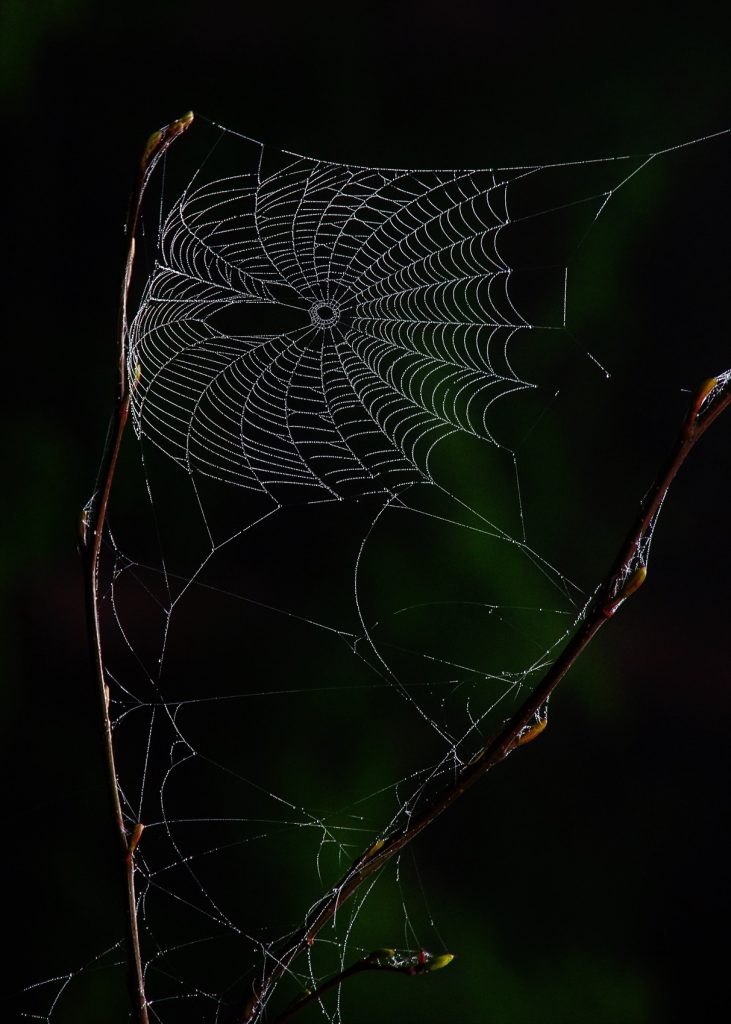Spiders and Their Webs

Spiral orb web. DORIS MAY
BY ERIN MCCLOSKEY
Spiders and their webs make for fun Halloween decorations, but real webs are fascinating feats of animal architecture! Did you know that although all spiders produce silk, not all spiders make webs? Different species use silk for making webs, hunting, netting, fishing, luring, lassoing, wrapping prey, making anchors or ladders, protecting eggs or young, or even “flying” (some tiny species can travel great distances by releasing a strand of silk that gets picked up by a breeze like a kite!). Web-making spiders construct five different types of web. When you’re out exploring nature, look carefully and see how many of these different webs you can identify.
Spiral Orb Webs
A beautiful design and brilliant hunting tool. Sticky strands spiral around spokes like a wheel. When an insect gets snared on the strands, the web vibrates to let the weaver know that dinner has arrived. When the web becomes damaged, the spider eats it and builds a new one!
Funnel Webs
These dense webs are flat on the surface with a funnel- or tube-shaped hole like a cave for the spider to hide in. When prey lands on the web, the spider surprise attacks, speeding across the surface of the web to deliver a deadly bite and drag dinner back into its lair. The funnel web even has a back exit in case the spider needs to make a quick escape!
Sheet Webs
Sheet webs look like small, flat, bowl- or dome-shaped hammocks. A few strands stretch vertically above the sheet. These “knock-down lines” catch flying insects and knock them down onto the sheet, where they’re entangled in its dense layers like a net (this web isn’t sticky). The spider, hiding somewhere inside the sheets, moves in quickly for the kill.
Triangle Webs
A triangle web is a rare and special find in Alberta, because only one species in Alberta produces this style of web. It looks like a few sections of a full spiral orb. The top of the triangle is attached to a long line that the spider stretches and holds taut. When an insect lands on the web, the spider lets go, trapping the prey in falling silk stands.
Cobwebs and Meshwebs
No haunted house is complete without cobwebs: tangled, messy, super-sticky webs (that seem to catch as much dust as prey!) in corners of rooms — ANY corner, including tops of walls and under stairs. Meshweb spiders are their outdoor cousins whose webs are found covering plants, under forest litter and rocks, and in barns and caves.
This article originally ran in Nature Alberta Magazine – Fall 2023.
